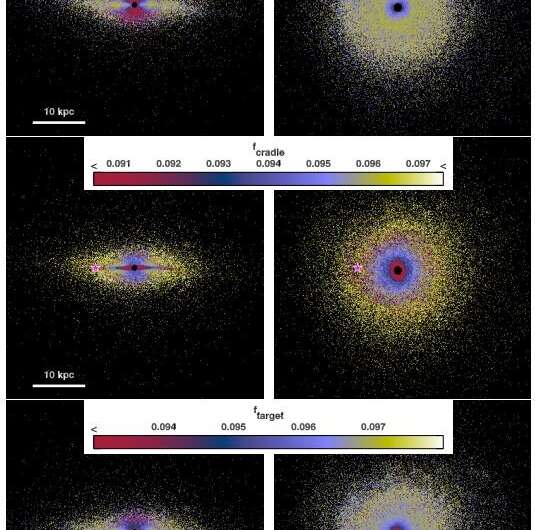Issued on: 29/09/2021

Hanoi (AFP)
From shoes and sweaters to car parts and coffee, Vietnam's strict and lengthy coronavirus lockdown has sparked product shortages among worldwide brands such as Nike and Gap which have grown increasingly dependent on the Southeast Asian nation's manufacturers.
The snarl-ups at Vietnam's factories are part of a broader crisis around the planet that is sending inflation surging and raising concerns about the pace of recovery in the global economy.
At a fabric mill east of Hanoi, Claudia Anselmi -- the Italian director of Hung Yen Knitting & Dyeing, a key cog in the supply chain of several European and US clothing giants -- worries daily if the factory can keep the lights on.
Its output plunged by 50 percent when Vietnam's latest devastating virus wave first struck in spring, and it faces perpetual problems securing the yarn it needs for its synthetic material.
"At first we were lacking people (to work) because everyone was stuck at home," said Anselmi, whose company's fabric is later used in swimwear and sportswear for customers including Nike, Adidas and Gap.

Now, "travel restrictions have jeopardised all logistics in and out... this has created long, long delays," she told AFP. "We only survive if we have the stock."
While lockdowns are gradually loosening across the country as infections steadily decline, millions of Vietnamese have been under stay-at-home orders for months.
And a complex web of checkpoints and confusing travel permit regulations have made life impossible for truck drivers and businesses trying to move goods across, as well and in and out of, the country.
Hamza Harti, managing director at FM Logistic Vietnam, said several drivers in the Mekong Delta had been forced to wait three days and nights in their vehicle to enter the city of Can Tho.
"They were without food, without anything," he told a French Chamber of Commerce panel discussion in Hanoi.
- Shifting production -
The delays and restrictions are a major headache for foreign businesses, many of which have pivoted to Southeast Asia from China in recent years -- a trend accelerated by the bruising trade war between Washington and Beijing.
In the south -- the epicentre of Vietnam's fight against Covid-19 -- up to 90 percent of supply chains in the garment sector were broken, the Vietnam Textile and Apparel Association (Vitas) said in August, according to state media.
Nike -- which warned last week it was struggling with shortages of its athletic gear and cut its sales forecasts -- pointed the finger at Vietnam, among others, saying 80 percent of its factories in the south and nearly half of its apparel plants in the country had shut their doors.

The sports colossus sources around half of its footwear from the communist country.
Although some factories were able to set up a system where staff could eat, work and sleep on site to get around lockdown restrictions, Vitas said that the cost was prohibitive for many.
Japan's Fast retailing, which owns the popular Uniqlo brand, also blamed the situation in Vietnam for hold-ups on sweaters, sweatpants, hoodies and dresses, while Adidas said supply chain issues -- including in the country -- could cost it as much as 500 million euros ($585 million) in sales by the end of the year.
Even with the prospect of lockdowns easing, many are fretting over the long-term impact on Vietnamese manufacturing, with Nike and Adidas admitting they were looking to temporarily produce elsewhere.
In a letter to Prime Minister Pham Minh Chinh, leading business associations representing the United States, the European Union, South Korea and Southeast Asian nations sounded the alarm over production shifting away from Vietnam, warning 20 percent of its manufacturing members had already left.

"Once production shifts, it is difficult to return," they wrote.
Nguyen Thi Anh Tuyet, deputy general director of Maxport Vietnam, whose 6,000 workers churn out activewear for the likes of Lululemon, Asics and Nike, told AFP the firm had "been very worried" about clients withdrawing orders -- even though it was one of the lucky few to have navigated recent brutal months largely unscathed.
Without foreign customers "our workers would become jobless", she said.
- Coffee, cars -
The pandemic has not only hit the country's textile industry but is also threatening global coffee supplies, with Vietnam the world's largest producer of robusta beans -- the variety used in instant coffee. Prices for the commodity are now sitting at a four-year high.
Car companies have not escaped either -- Toyota slashed production for September and October owing partly to virus issues, telling AFP "the impact has been big in Vietnam", as well as Malaysia.

Shortages have been made worse by a rise in demand in the West after a virus-induced slump.
Back at her textile mill near Hanoi, Anselmi believes companies will stick with Vietnam if it can return to some kind of normality in October.
"If we can allow the factories to work then I think the trust (in Vietnam) is still there."
© 2021 AFP






